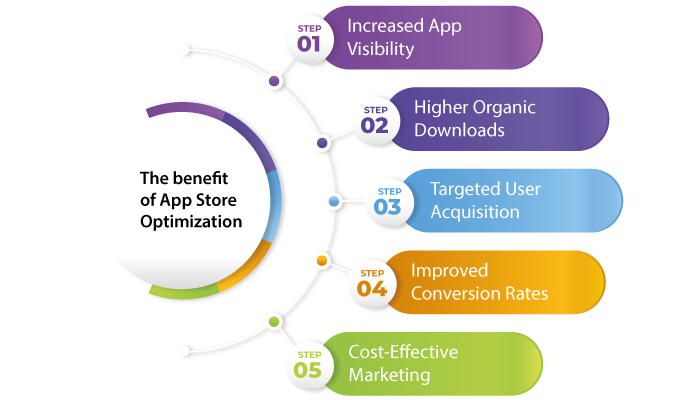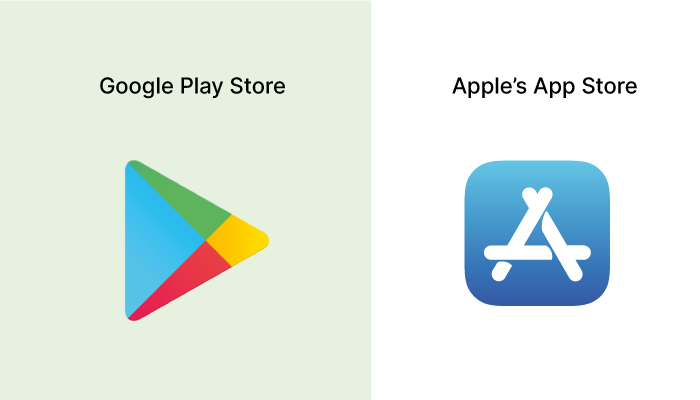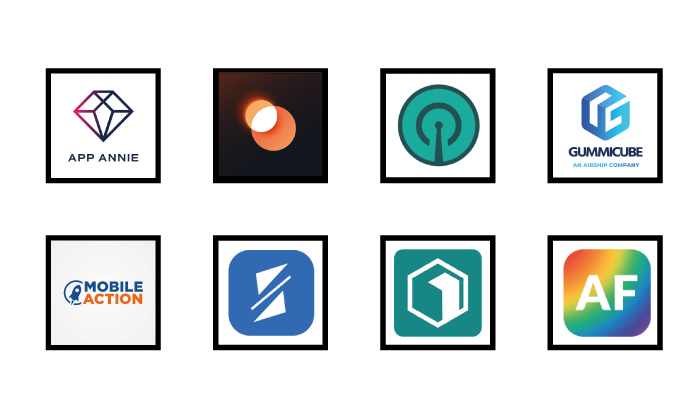Table of Contents
App store optimization is the key to a successful mobile app.
Everyone is developing a mobile app in 2023 whether it is an iOS app, android, or hybrid app. Consequently, there are over 5 million apps in app stores.
So, what this means for the new entries, new businesses who are trying to make a name for them is high competition and risk of being buried.
That’s where the concept of app store optimization comes in.
Reports show that 82% of users discover apps via app store browsing and/or app store recommendations. That’s the magic of ASO.
Now, if you are someone new to the concept of app store optimization and want to learn ASO can help you, well this blog is for you.
Here, we shall be discussing all you need to know about app store optimization including its definition, its benefits, techniques, and much more. Therefore, with this being said, let’s get right into it, starting with:
What Is App Store Optimization?

So, what is App Store Optimization?
The term “App Store Optimization” (ASO) refers to the process of optimizing mobile apps to rank higher in app store search results. It involves various strategies and techniques aimed at improving visibility and increasing downloads.
Moreover, ASO is crucial because the majority of app downloads come directly from app store searches.
By implementing ASO best practices, you can improve your app’s visibility, attract relevant users, and ultimately increase downloads.
Now, ASO can often be compared to SEO for websites. That gives you an idea of its importance. And to give you a deeper insight into the same, we shall be discussing different benefits of ASO in the section below.
The benefit of App Store Optimization

So, what are the benefits of app store optimization?
Everyone is worried about investing in an operation if they don’t see the outcome and the same is the case here.
But worry not, because app store optimization surely delivers results. And here’s how it happens:
Increased App Visibility
App Store Optimization helps improve your app’s visibility in app store search results, making it more likely to be discovered by potential users.
By optimizing your app’s metadata, keywords, and other elements, you can increase your app’s chances of ranking higher in relevant search queries.
Higher Organic Downloads
Improved visibility leads to increased organic downloads. When your app appears higher in search results, it attracts more attention and generates higher click-through rates.
This, in turn, translates into more downloads from users who are actively searching for apps in your app’s category or with specific keywords.
Targeted User Acquisition
ASO allows you to optimize your app’s metadata and messaging to attract your target audience.
By conducting thorough keyword research and crafting compelling descriptions, you can align your app with the needs and preferences of your ideal users, leading to higher-quality downloads and better user retention.
Improved Conversion Rates
Well-optimized app stores elements, such as captivating app icons, engaging screenshots, and persuasive descriptions, can significantly impact conversion rates.
Moreover, when users land on your app’s page, they are more likely to be persuaded by the visuals and information presented, leading to higher conversion rates from visitors to actual downloads.
Cost-Effective Marketing
ASO can be a cost-effective strategy compared to other marketing tactics.
While paid advertising campaigns can drive immediate results, they often require ongoing investment.
App store optimization, on the other hand, focuses on optimizing your app’s organic visibility, resulting in long-term benefits and reducing the dependency on paid promotion.
App Store Optimization: Apple’s App Store vs Google Play Store

We all know the major difference between Android App Development and iOS App Development. And since both of them have a different app store, the ASO process is also different.
Google Play Store and Apple’s App Store have some differences when it comes to app store optimization iOS/Android (ASO).
In Google Play Store, keywords play a significant role, and it’s important to include them in the title, description, and metadata. The description should be comprehensive and optimized with relevant information.
On the other hand, Apple’s App Store gives more weight to keywords in the title and has limited character space, so it’s crucial to choose relevant keywords wisely. The description should be concise, and engaging, and highlight the app’s unique selling points.
Both app stores consider user ratings and reviews as important factors in App Store Optimization Strategies. Positive reviews and higher ratings can improve visibility and user trust. In terms of visual assets, both stores emphasize high-quality app icons, screenshots, and videos.
However, Google Play Store allows more screenshots and videos, providing more opportunities to showcase the app’s features.
Overall, while there are similarities in ASO strategies between Google Play Store and Apple’s App Store, understanding the specific differences in keyword placement, description optimization, and visual assets can help mobile app developers and marketers effectively optimize their apps for each platform.
Moving on, with all said and done, it’s time to discuss the best app store optimization techniques in the section below.
App Store Optimization Strategies

We have talked a lot about app store optimization! Everything apart from strategies used to optimize the app store.
Well, it’s just as important as app development and we understand that. Therefore, here’s how you can go through the ASO process below.
· Conducting Market Research
The very first thing you need to do about optimizing the app store iOS or Android is, conduct market research.
So, how do you do it? Well, to make it easier for you, we have divided the very first step into different parts, and here’s what you need to do.
Analyzing Competitors
To create a successful app store optimization strategy, you need to understand your competitors.
Therefore, here you should analyze the top-performing apps in your category and identify their strengths and weaknesses.
Moreover, pay attention to their app titles, keywords, descriptions, and user reviews. This research will help you identify opportunities to differentiate your app and identify target keywords.
Identifying Target Keywords
It goes without saying that, keywords play a vital role in ASO as they determine how your app appears in search results.
Plus, conduct keyword research to identify relevant and high-traffic keywords for your app.
As a team, you should always utilize keyword research tools, analyze search volumes, and consider long-tail keywords.
Focus on keywords that strike a balance between relevance, search volume, and competition.
Studying User Behavior
Let’s talk about a most important part of research for ASO, understanding user behavior.
You see, it is important to understand how users search for apps and what influences their decision-making process.
Therefore, study user behavior, analyze search trends, and monitor user feedback and reviews.
This will help you align your app’s features, messaging, and positioning with user expectations, ultimately driving more downloads.
· App Title and Keywords
App title and keywords in it are the two most important elements in the whole app store optimization thing.
That’s why these are the things that you need to do:
Crafting an Engaging App Title
Your app’s title is the first thing users see, and it should be catchy, memorable, and relevant.
That’s why you should incorporate primary keywords in the title while keeping it concise and compelling.
A well-crafted title can significantly impact your app’s visibility and click-through rates.
Selecting the Right Keywords
We can’t stress this enough, but choosing the right keyword for your app store optimization strategy is super important.
Therefore, we highly recommended that you use relevant and popular keywords that have moderate competition.
Also, consider adding long-tail keywords and use keyword variations to cover a broader range of search queries.
Keyword Placement and Density
Using keywords is important, but what’s even more important is, using them the right way.
Strategically place your primary and secondary keywords in your app’s title, subtitle, and keyword field. Avoid keyword stuffing, as it can negatively impact your app’s visibility.
Maintain a natural and balanced keyword density throughout your app’s metadata.
· App Description and Metadata
Working on App descriptions and metadata is one of the app store optimization best practices. And here’s how we work on it.
Writing a Compelling App Description
Your app description plays a crucial role in convincing users to download your app.
Craft a compelling and concise description that highlights your app’s unique selling points, features, and benefits. Focus on communicating value and addressing user pain points.
Leveraging Bullets and Formatting
Use bullet points to highlight key features and benefits.
Break your description into scannable paragraphs and utilize formatting options such as bold and italics to make important information stand out. Make sure your description is easy to read and visually appealing.
Optimizing App Icon, Screenshots, and Preview Videos
When it comes to app store search optimization Visual elements are essential for catching users’ attention. Invest in a visually appealing app icon that conveys your app’s purpose.
Create engaging screenshots that showcase your app’s features and benefits. If possible, include preview videos that demonstrate your app’s functionality and user experience.
· App Ratings and Reviews
Here’s a little app store optimization tip for you, always focus on the app rating and review.
It is one of the most important things. And here’s how it works:
Encouraging Positive Reviews
Positive reviews can significantly impact your app’s credibility and visibility.
Encourage satisfied users to leave reviews by implementing in-app prompts, offering incentives, or providing a seamless review submission process.
Plus, respond promptly to user feedback, address concerns, and show appreciation for positive reviews.
Responding to User Feedback
This is one of the most important parts of any given app store optimization strategy.
Engage with your users by responding to their reviews, both positive and negative. Acknowledge and address any issues or concerns raised in negative reviews.
And prompt and thoughtful responses demonstrate your commitment to customer satisfaction and can improve user perception of your app.
Monitoring and Managing Ratings
Regularly monitor your app’s ratings and reviews to gauge user sentiment and identify areas for improvement.
Use feedback to make informed updates and enhancements to your app.
In addition to this, track your app’s overall rating and aim to maintain a high average rating, as it positively impacts app store visibility.
· App Localization and Internationalization
Next thing we are going to discuss in this app store optimization guide!
Well, let us introduce you to app localization and internationalization. While these are two opposite concepts, both of them work like this”
- App Localization“The process of adapting an application to suit the language, cultural preferences, and requirements of a specific target market or region.”
- App Internationalization“The process of UI/UX designing and developing an application in a way that allows for easy adaptation to different languages, cultures, and regions.”
Moving on, let’s see what you can do here:
Tailoring Your App for Different Markets
Expanding your app’s reach beyond your native market can significantly increase its visibility and downloads.
Adapt your app for different regions and cultures by considering language localization, cultural preferences, and local market trends.
Moreover, conduct thorough market research and tailor your app’s messaging and features accordingly.
Translating App Metadata
Translate your app’s title, description, keywords, and other metadata elements into the target language(s) to improve discoverability among international users.
Plus, utilize professional translation services or collaborate with native speakers to ensure accurate and culturally appropriate translations.
Adapting to Cultural Preferences
Beyond language translation, consider cultural nuances when localizing your app. Adapt visuals, colors, symbols, and user interface elements to resonate with the target audience.
Furthermore, understanding and respecting cultural differences can significantly enhance user engagement and overall success in new markets.
· App Engagement and Retention
Everyone wants to drive more users to their mobile app on the app store, that’s the entire goal of app store optimization services.
Well, there are a few things that you can do here, let’s see what these are:
Improving User Experience
It goes without saying that, User experience (UX) is paramount for app success.
Optimize your app’s performance, speed, and usability to deliver a seamless and enjoyable experience.
Moreover, you should conduct user testing, gather feedback, and make iterative improvements to enhance overall satisfaction and retention.
Enhancing App Performance and Speed
Optimize your app’s loading times, responsiveness, and overall performance. Slow or buggy apps frustrate users and lead to high abandonment rates.
Plus, the team should also regularly work with the developer to regularly test and optimize your app’s performance to ensure a smooth and efficient user experience.
Implementing Push Notifications and In-App Messaging
Lastly, you can leverage push notifications and in-app messaging to engage and retain users.
Send personalized and timely notifications to remind users about app updates, new features, promotions, or relevant content.
Implement in-app messaging to provide contextual guidance and support within the app.
· App Promotion and Marketing
Last but not least, it’s part of the app store optimization Android/iOS where we use mobile app ad network to promote and market the solution.
Leveraging Social Media
You can utilize social media platforms to create awareness, build a community around your app, and drive downloads.
Develop engaging content, share user testimonials, and collaborate with influencers or industry partners to expand your app’s reach and visibility.
Influencer Collaborations
Partner with influencers or bloggers in your app’s niche to promote your app to their followers.
Seek influencers who align with your app’s target audience and have a genuine interest in your app’s features. Influencer endorsements can significantly increase app visibility and credibility.
Running Paid Advertising Campaigns
Consider running paid advertising campaigns on various platforms such as Google Ads, Facebook Ads, or in-app ad networks.
Target specific demographics, use compelling visuals, and create persuasive ad copy to drive app downloads. Continuously monitor and optimize your ad campaigns for maximum ROI.
This is also where concepts like Corporate branding or product branding come into play.
· Monitoring and Optimization
With all said and done, we have come to the final steps of this app store optimization strategy, and what we need to here is track performance and improve on the same.
Here’s how we do it.
Tracking App Performance Metrics
Regularly monitor key performance metrics such as app store impressions, click-through rates, conversion rates, and download numbers.
Plus, use app analytics tools to gain insights into user behavior, engagement, and retention. Identify areas for improvement and track the impact of ASO strategies on these metrics.
Analyzing User Feedback and Behavior
Continuously analyze user feedback, reviews, and behavior patterns to identify pain points, areas of satisfaction, and opportunities for optimization.
This is much similar to what we do in MVP.
Iterative Testing and Continuous Improvement
ASO is an ongoing process that requires constant monitoring, testing, and optimization.
Continuously experiment with different elements, such as keywords, visuals, and app messaging, to identify what resonates best with your target audience. And regularly update and optimize your app based on user feedback and evolving market trends.
With this out of the way, it’s finally time to look at some of the best tools for App Store Optimization.
ASO, App Store Optimization Tools

If you are going in for ASO, there are some tools that you can take advantage of. Therefore, some of these best apps store optimization tools are, as mentioned below:
- App Annie: Provides app market data, insights, and analytics to track app performance, competitor analysis, keyword research, and market trends.
- Sensor Tower: Offers keyword research, app store optimization recommendations, competitor analysis, and app performance tracking for both iOS and Android apps.
- Mobile Action: Provides keyword tracking, app store analytics, competitor analysis, and keyword suggestions to improve app store optimization strategies.
- TheTool: Offers keyword tracking, app store optimization recommendations, competitor analysis, and review monitoring for both iOS and Android apps.
- AppFollow: Helps monitor and manage app reviews and ratings, track keyword rankings, analyze competitor performance, and gain insights for app store optimization.
- SplitMetrics: Allows you to create and test different app store page variations, including app icons, screenshots, and descriptions, to optimize conversion rates and drive more downloads.
- StoreMaven: Offers A/B testing solutions to optimize app store assets and increase conversion rates, helping you understand the impact of different elements on user behavior.
- Gummicube: Provides keyword research, app store analytics, and optimization recommendations to improve app visibility and drive organic downloads.
Conclusion
With the growing demand for mobile app development, app store optimization is growing more and more important. As we discussed in this blog, there are a number of app store optimization strategies that you can use and app store optimization tools too. Well, if you want to get into this seriosuly, we highly recommended that you consult an app store optimization company.





No Comments
Comments are closed.